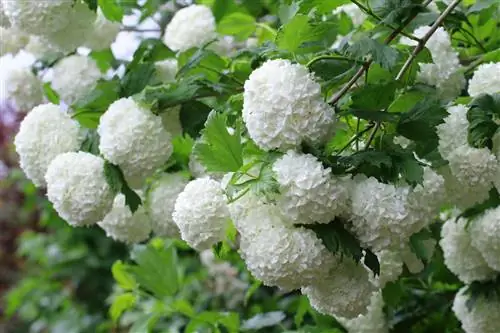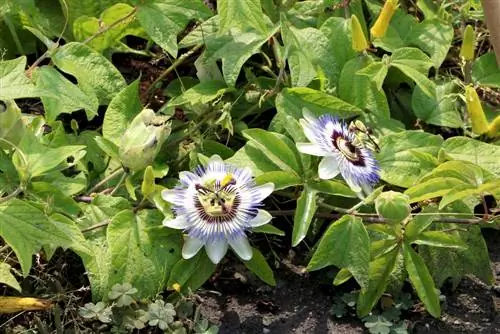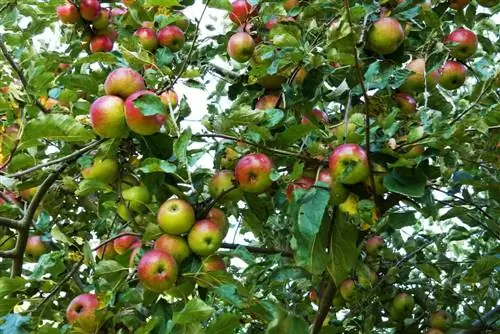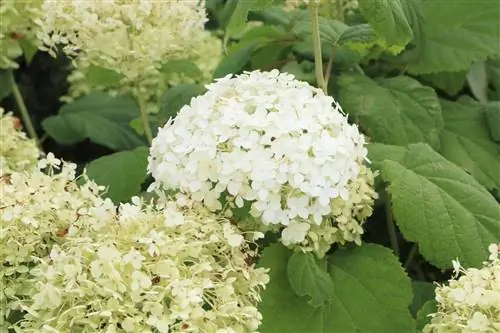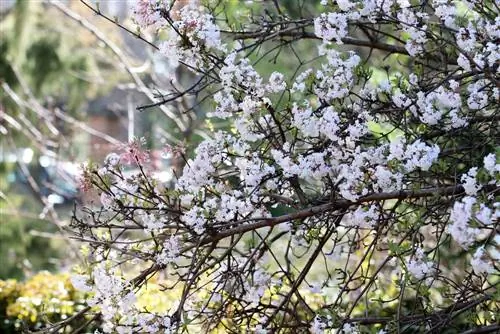- Author admin [email protected].
- Public 2023-12-17 03:39.
- Last modified 2025-06-01 06:48.
Contrary to some gardeners' opinions, cutting back a viburnum is to the plant's advantage under certain conditions. The following are the best tips on the topic of “cutting snowballs”.
Pruning reasons
As they get older, most snowballs develop a sprawling habit. It expands and the interior becomes more and more bright. He's basically falling apart. Close to the ground it often becomes bald. Then, at the latest, the moment has come to bring it back into shape by cutting it back and encourage it to sprout evenly. In order to prevent baldness and thinning, careful, regular trimming is recommended.
Because snowballs can grow so much, they often deform. Nothing stands in the way of a topiary if the optimal time and the correct procedure are followed.
Another reason for cutting can be if the plant is diseased or has a severe pest infestation. Damaged branches and leaves continue to draw nutrients. If they are removed early, the improved supply ensures greater resistance and the chance of a quick recovery increases.
The right age
In principle, young snowballs should not be cut. They need sufficient time for their development, which also develops their defenses and a strong structure. It is recommended that you wait four years before using garden or hedge trimmers. By then they will have reached their natural shape, which can be disturbed if pruned too early.
The right time
For most varieties, the first cut can be made in March before flowering begins in April. The optimal time comes after the flowers have wilted. Since pruning stresses the plant and it needs its energy to produce flowers, you should wait for the flowering period because new growth after flowering can be stimulated through the right pruning technique as well as flower formation.
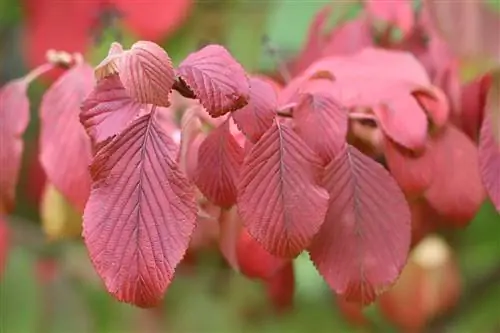
The wrinkle-leaved viburnum is an exception. It can be cut as early as February if a frost-free day is chosen.
Tip:
If you don't want to or can't wait until the flowering ends, you can use the flowers as cut flowers. Simply place them in lukewarm water, change the water daily and add a pinch of sugar, then they will last particularly long in a vase.
Frequency
In order to maintain the natural appearance as much as possible and to stress the plant as little as possible, cutting should only be carried out every two to three years.
Exception:
If pruning is urgently necessary due to diseases or pests. Slight shape corrections can be carried out a maximum of twice a year, as long as only the shoot tips are trimmed.
The right cutting tool
It is important when cutting to use a sharp and clean cutting tool. Sharp blades prevent frayed cuts, which unnecessarily delay drying and wound healing. This leads to an increased risk of fungal infections and pest infestations - especially if unclean tools are also used. It is recommended to disinfect the cutting tool shortly before use.
Several options are available:
- Scrub the tool vigorously and place it in 70 percent alcohol or spirit for at least ten minutes
- Hold over gas flame for two minutes
- Wipe thoroughly with standard disinfectant wipes (e.g. Sagrotan)
Proper protective clothing
Snowballs have poisonous plant parts. In particular, skin contact with the hairs under the leaves of some varieties can lead to allergic reactions such as rashes and breathing problems. Therefore, suitable protective clothing should always be an integral part of work/cutting snowballs and should look like this:
- Solid gardening gloves
- Long sleeve top
- Long trouser legs
- Safety glasses
- Mouth and nose mask
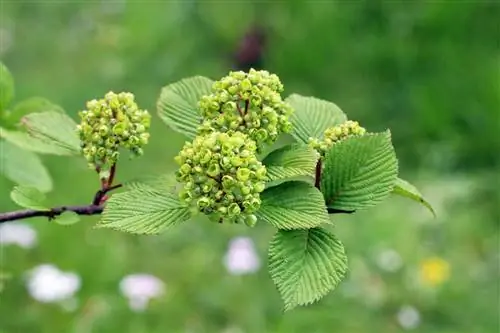
How much to cut?
In March, you should only remove old shoots so that the buds on the new shoots are not removed. In June it can definitely be a little more. Flower shoots can also be shortened here if necessary.
Topiary
When pruning topiary, only the old shoots should be pruned/cut off. It is important to ensure that a maximum of 30 centimeters is cut off. It is advisable to make shape cuts so regularly that it does not become too out of shape and therefore cut off too much.
Denser growth
If a snowball thins out too much or the ground is bare, it is important to use the right cut to stimulate the growth of new shoots and branches. After flowering, including new shoots, can be shortened by 30 to 50 percent. This could mean less lush flowers the following year, but the following year there will be even more flowers due to the increased shoots and branches, which are even better expressed through a dense appearance.
Proper cutting technique
If a snowball is to be shortened overall, you should always cut from the inside out. When making cuts, the intersection point must always be over one eye. Mainly shoots that bend outwards and cause them to fall apart are cut. Old and dried shoots are cut off close to the ground.
Note:
Certain places on the shoots from which new shoots or flowers form are called eyes. They can be perceived as a thickening, like a kind of lump.
Radical cut
If snowballs no longer bloom or bloom only slightly, if they are immensely weakened after an illness or pest infestation or show significant growth problems, a radical cut usually helps them to regain energy. However, radical cuts represent a massive stress factor, which is why they should only be carried out in an “emergency” - when nothing else helps.
How to do it:
- Do not cut the main trunk deeper than 30 centimeters
- There should be some new shoots left on the main trunk
- Leave at least three eyes on new shoots
- Only do it on frost-free days - ideally in June
- Administer nutrient-rich and nitrogen-containing fertilizer to old snowballs (only between March and August)
- Mulch after radical pruning on younger specimens
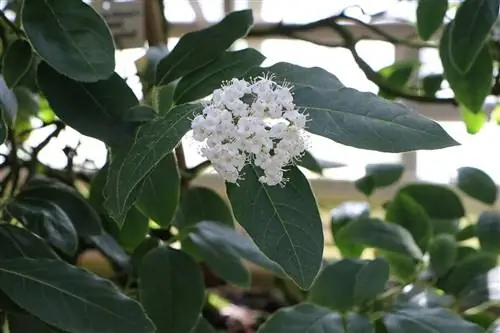
Snowball as potted plants
Because snowballs can grow immensely large and wide, cutting them at least once a year is essential. All bent shoots in the wood that is currently growing are cut off. Good ventilation is particularly necessary if the potted plant is in front of walls, for example, as otherwise the risk of rot and fungus increases. Therefore, cut out any shoots that are too close at the base.
Withered flowers
In any case, withered flowers should be cut off if they have not previously been used as cut flowers for the vase. Even withered flowers continue to draw nutrients that are subsequently missing for the rest of the plant. But she could really use this for new shoot growth. The following applies: wilted flowers should be quickly removed from a snowball.
Cuttings disposal
As already mentioned, the snowball has poisonous and allergy-causing plant parts. For this reason, the clippings should be disposed of in such a way that no one can accidentally come into contact with them or inhale hairs. If a compost heap is freely accessible, no snowball waste should end up there. It is better to dispose of it via the municipal garden waste disposal or organic waste bin. Shredding offers an alternative. When chopped particularly small, quickball clippings pose no danger and can be ideally used as mulch for moisture storage and fertilization.

